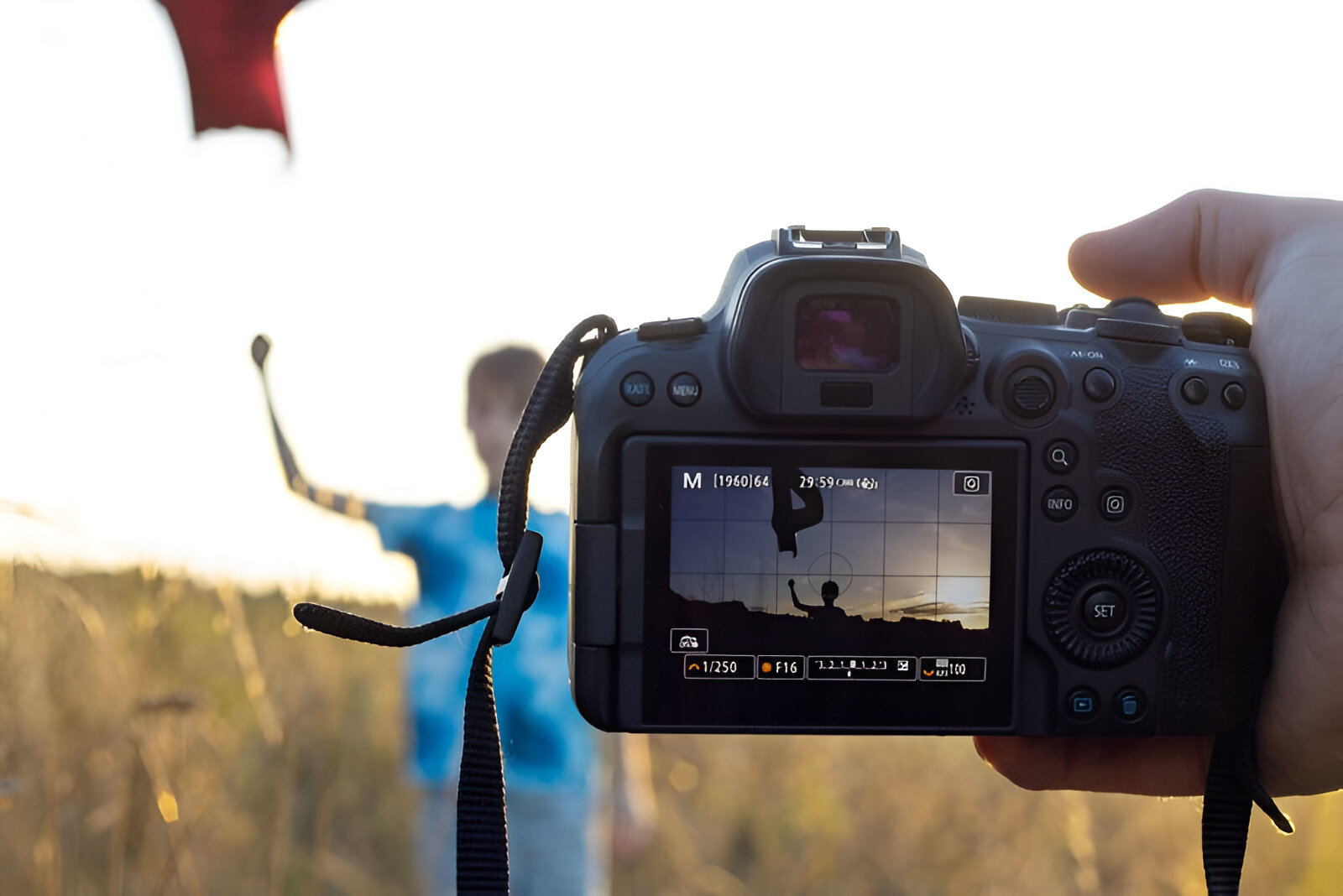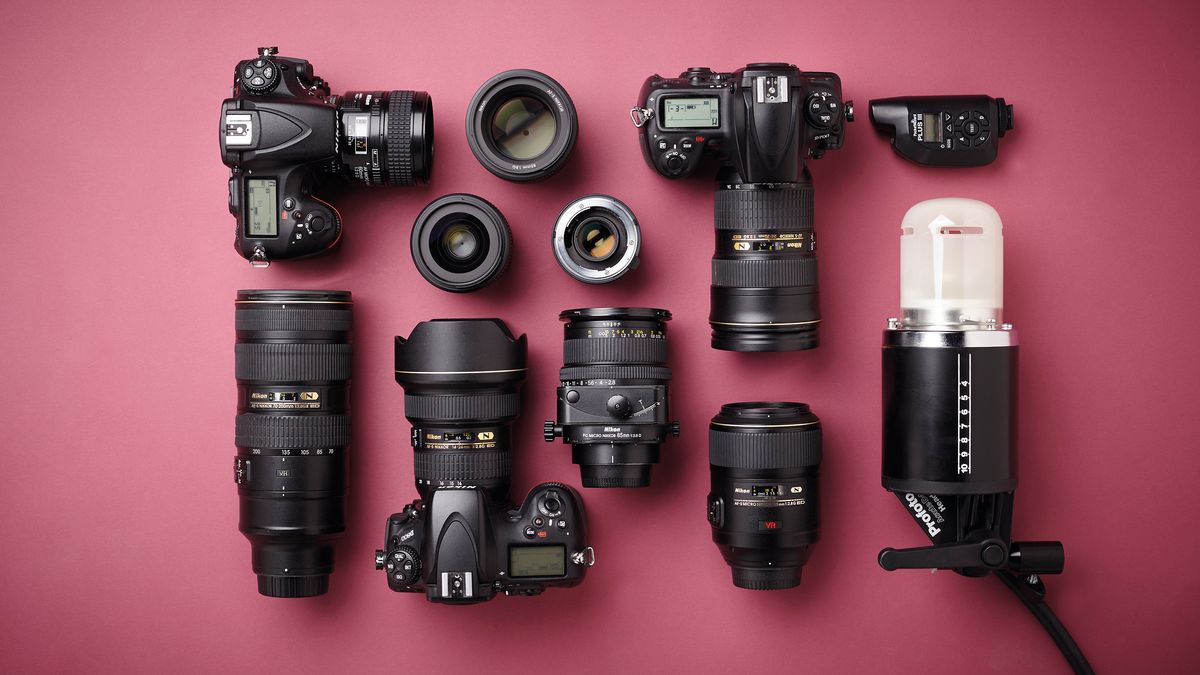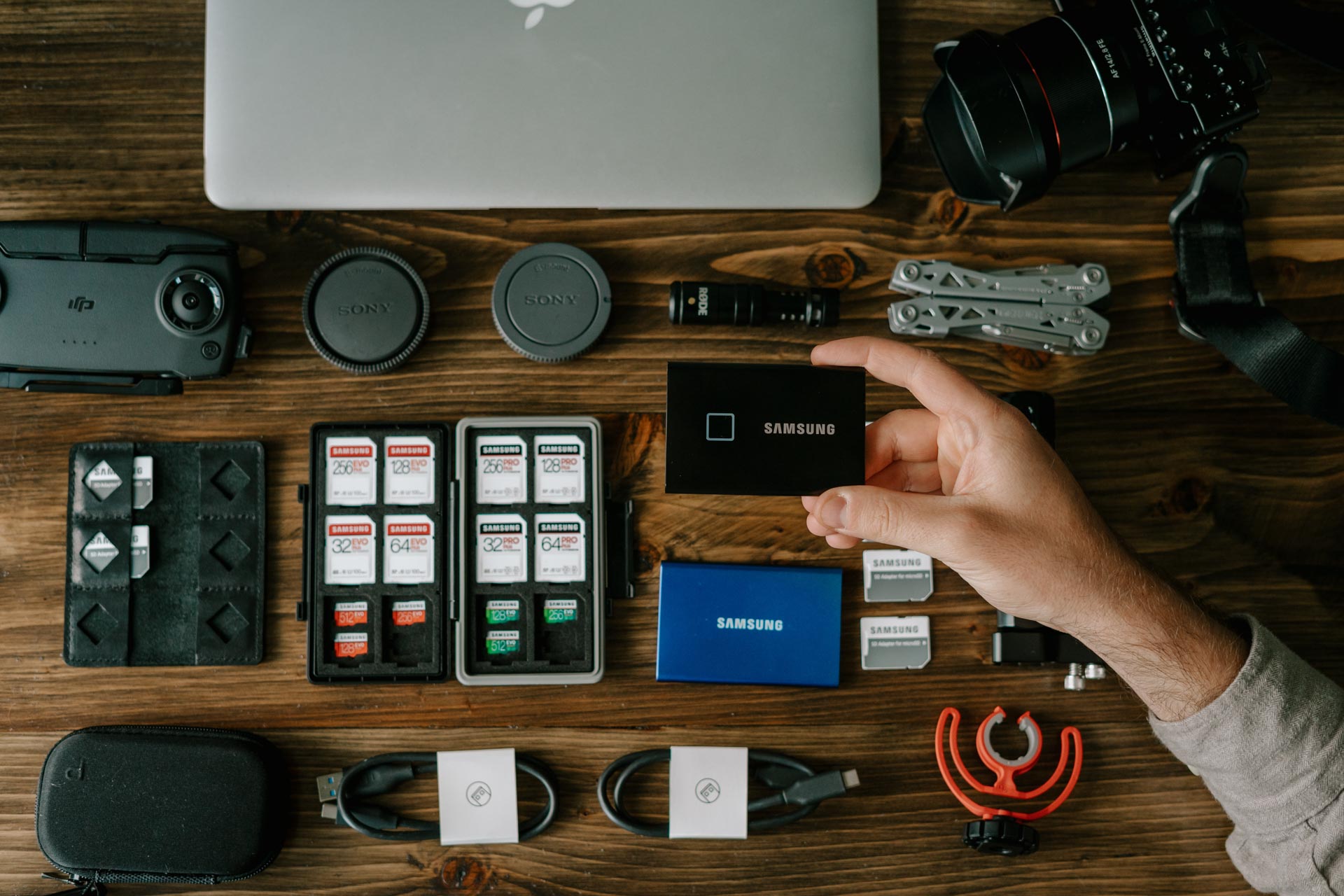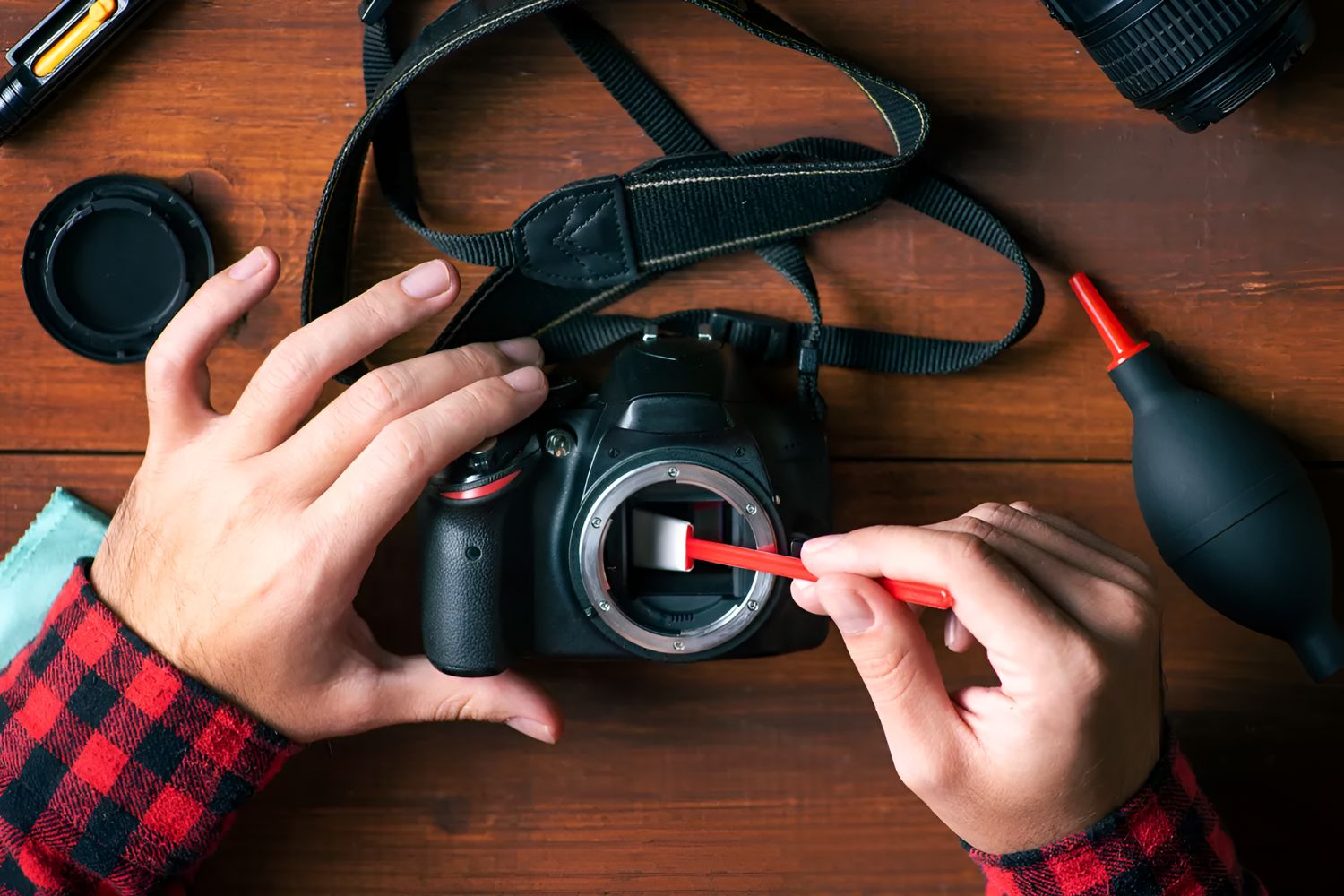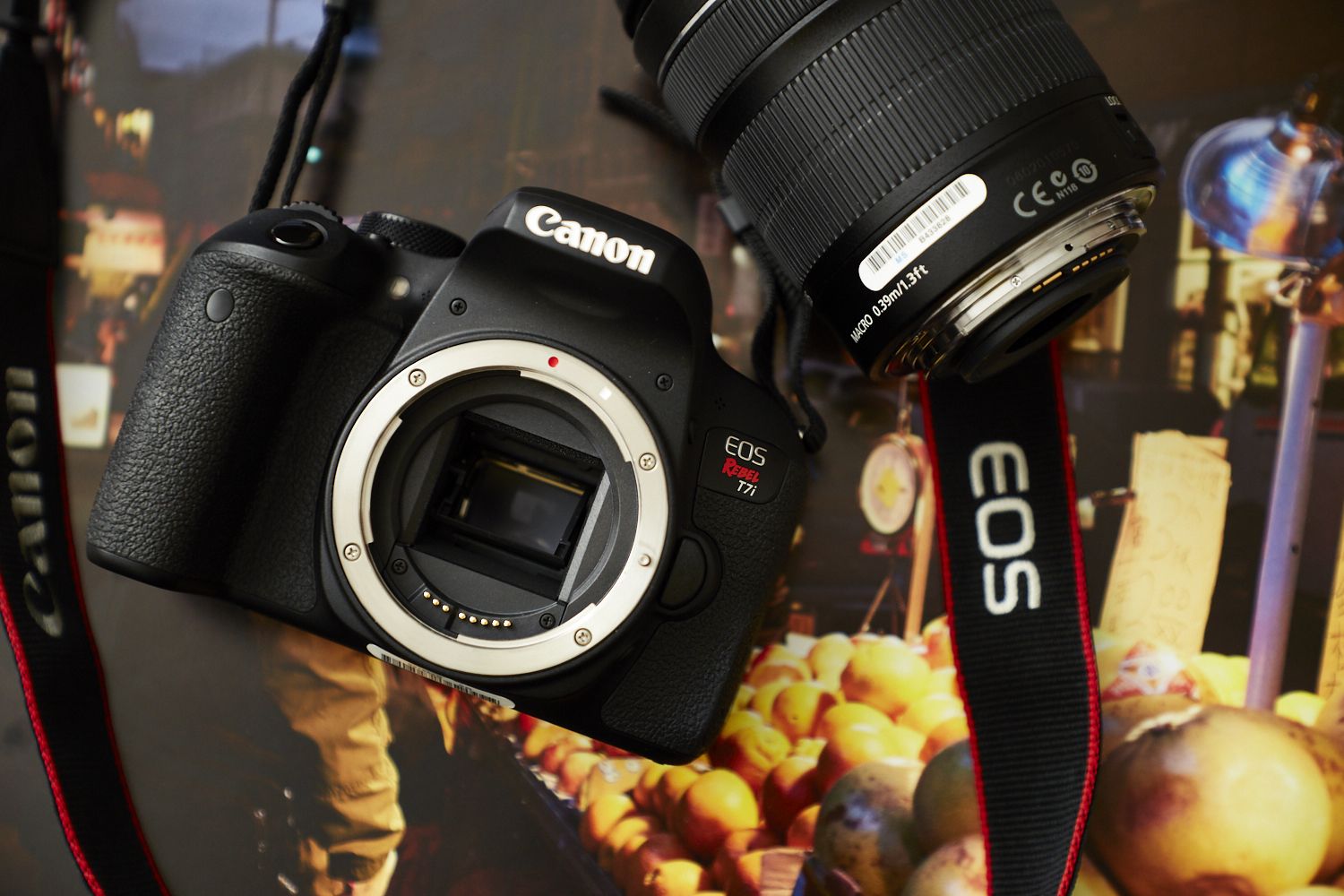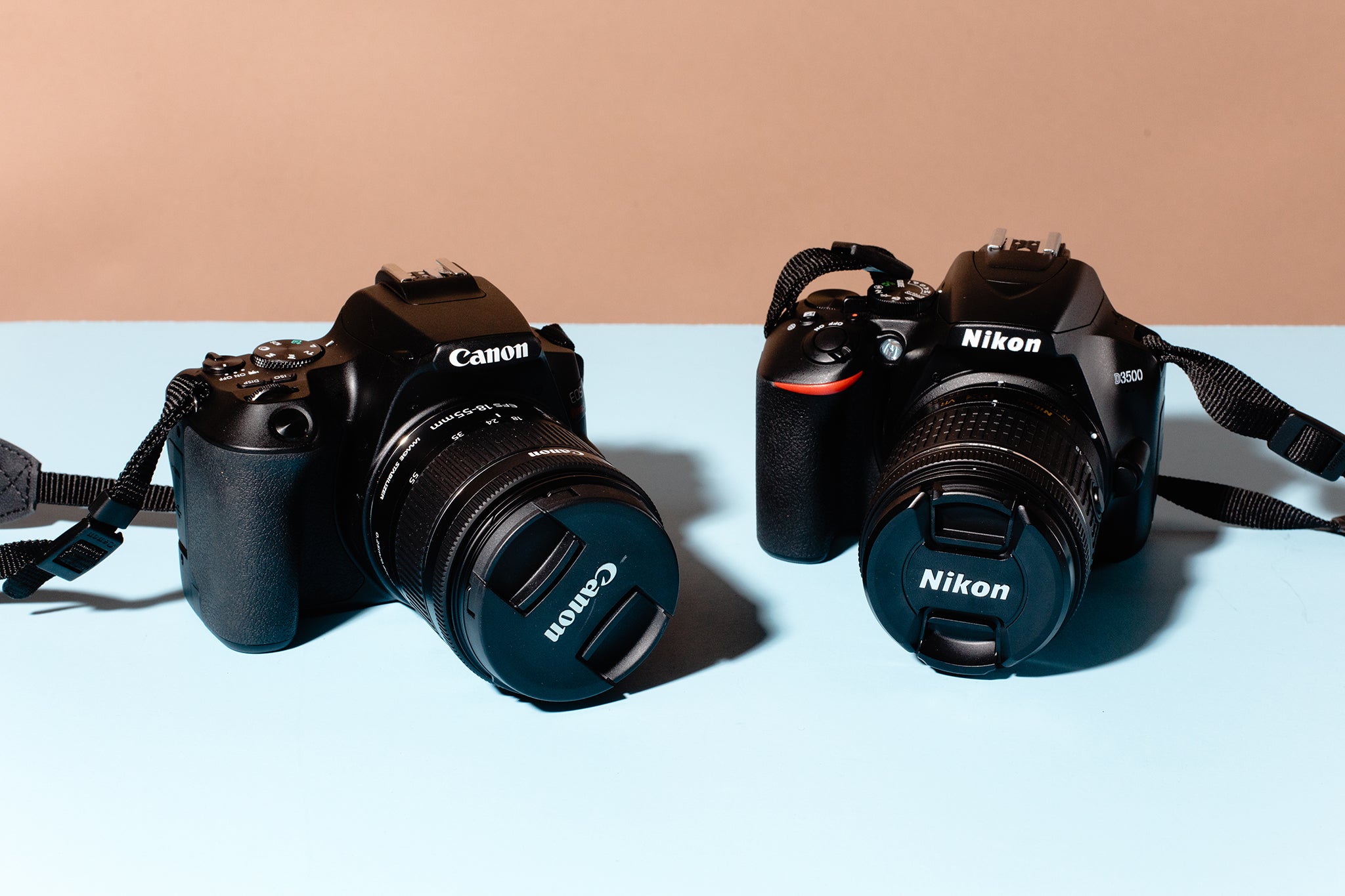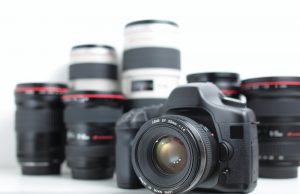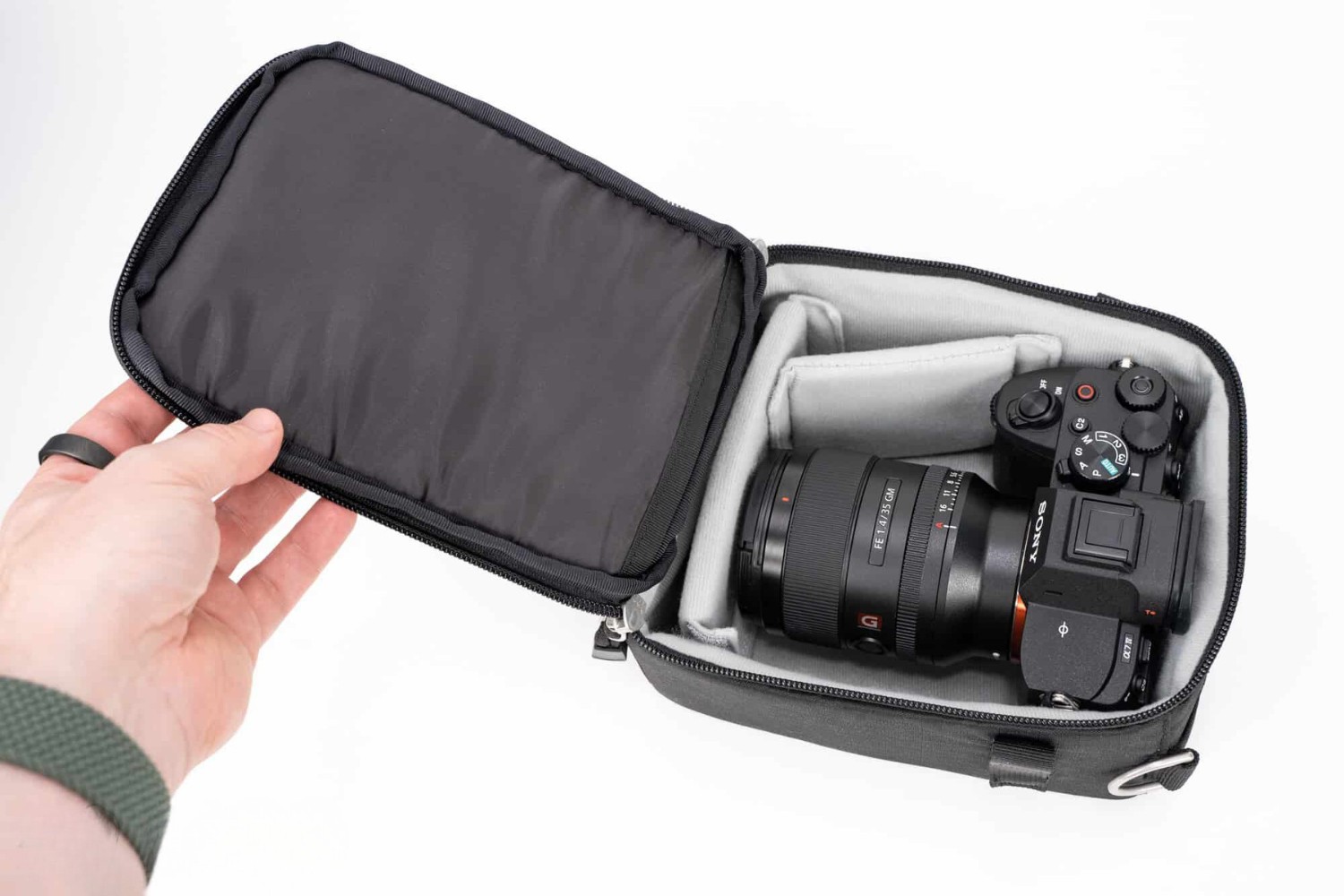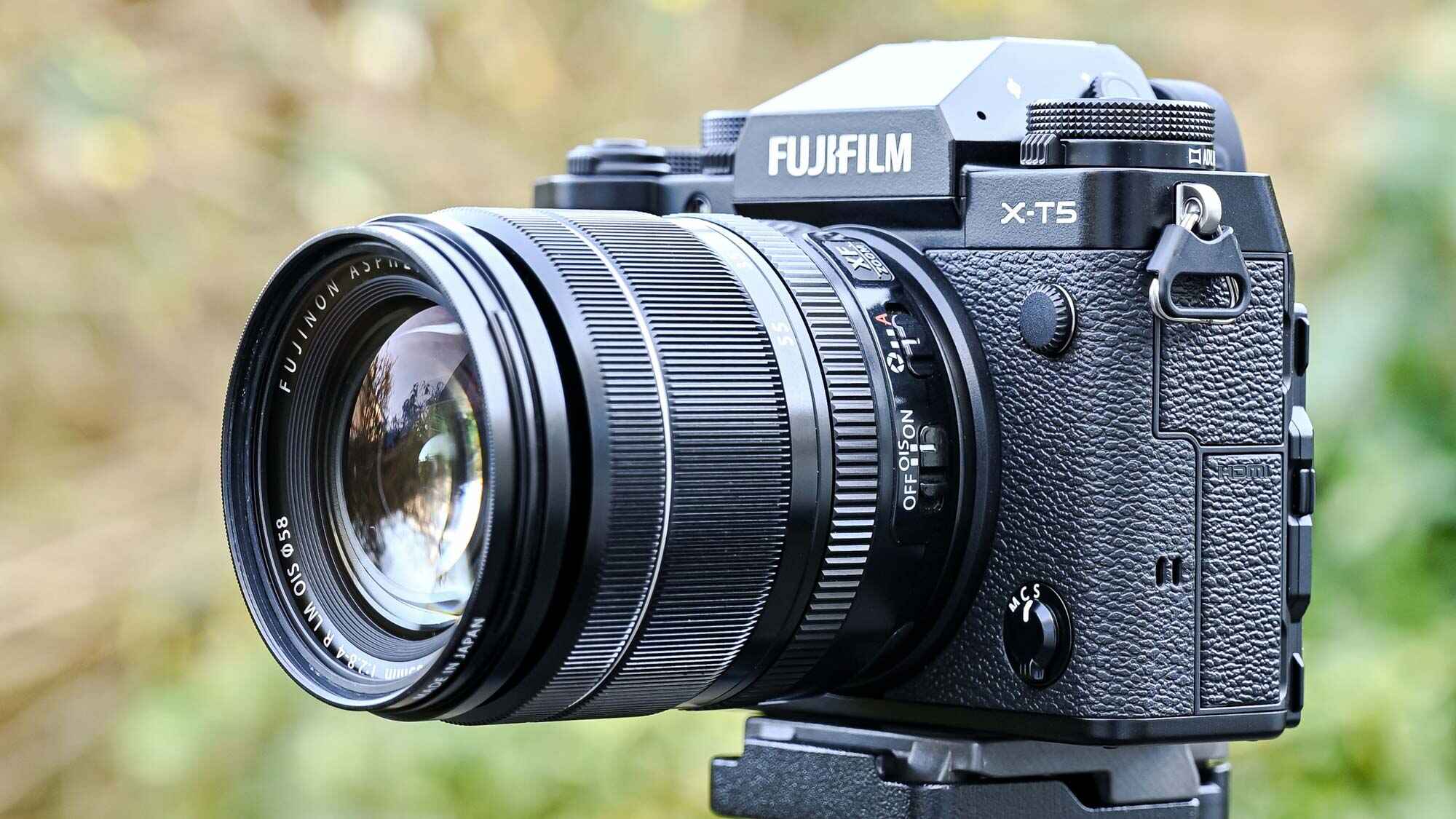Introduction
Are you frustrated by the dull, lackluster photos your DSLR camera is producing? You're not alone. Many photography enthusiasts encounter this issue, but fear not – there are numerous factors that can contribute to this problem, and they can be addressed effectively.
Capturing stunning, vibrant images with your DSLR camera involves a combination of technical proficiency, attention to detail, and creativity. Understanding the intricacies of exposure, mastering camera settings, and optimizing lighting are all crucial elements in achieving captivating photographs. Additionally, post-processing techniques can breathe new life into lackluster images, transforming them into visually striking masterpieces.
In this comprehensive guide, we will delve into the various reasons why your DSLR camera may be producing dull photos and explore practical solutions to elevate the quality of your images. By the end of this journey, you will be equipped with the knowledge and techniques to infuse your photography with brilliance and allure. Let's embark on this enlightening exploration of DSLR photography and unleash the full potential of your camera.
Understanding Exposure
Exposure is the bedrock of photography, and mastering it is essential for capturing vibrant, well-defined images. The exposure triangle – comprising aperture, shutter speed, and ISO – dictates the amount of light that reaches the camera sensor, influencing the brightness, sharpness, and overall quality of the photograph. When any element of the exposure triangle is mismanaged, it can result in dull, lackluster images.
Aperture, denoted by an f-stop value, regulates the size of the lens opening and the depth of field. A wider aperture (lower f-stop) allows more light to enter the lens, ideal for low-light conditions and creating a shallow depth of field, whereas a narrower aperture (higher f-stop) is suitable for capturing landscapes and maintaining sharpness throughout the frame.
Shutter speed determines the duration for which the camera sensor is exposed to light. A fast shutter speed is ideal for freezing motion, while a slower speed can create a sense of motion blur. Misjudging the appropriate shutter speed for a given scene can result in overexposed or underexposed images, leading to a dull appearance.
ISO, the sensitivity of the camera sensor to light, plays a pivotal role in exposure. Higher ISO settings are beneficial in low-light scenarios but can introduce digital noise, degrading image quality. Conversely, lower ISO settings produce cleaner images but require ample available light.
Understanding the interplay of these three exposure components is crucial for achieving optimal image exposure. By mastering the exposure triangle and making informed adjustments based on the shooting conditions, you can breathe life into your photographs, ensuring they exude vibrancy and visual appeal.
Checking the Camera Settings
Ensuring that your DSLR camera is configured with the appropriate settings is paramount in preventing dull photos. Start by examining the shooting mode – whether it’s manual, aperture priority, shutter priority, or program mode – to ascertain that it aligns with the desired creative control and the prevailing lighting conditions. Manual mode grants full autonomy over exposure settings, allowing for meticulous adjustments tailored to the scene.
White balance, a fundamental setting that regulates color temperature, warrants careful attention. Incorrect white balance can lead to color casts that diminish the vibrancy and fidelity of the image. By selecting the appropriate white balance preset or manually adjusting it to suit the lighting environment, you can ensure that the colors in your photos appear true to life.
Furthermore, evaluating the metering mode is crucial. Evaluative or matrix metering, center-weighted metering, and spot metering each have distinct applications, and selecting the most suitable mode for the given scenario can significantly impact the exposure and overall quality of the image.
Another vital aspect to consider is the file format in which the images are being captured. Shooting in RAW format provides greater latitude for post-processing adjustments, preserving more image data and allowing for finer control over exposure, color, and sharpness. Conversely, shooting in JPEG format, while more compact, compresses the image data and limits the extent of post-processing capabilities.
Reviewing and calibrating these settings in your DSLR camera ensures that it is primed to capture vibrant, well-exposed images. By fine-tuning these parameters to harmonize with the shooting conditions and your creative vision, you can mitigate the risk of producing lackluster photos and elevate the overall quality of your photography.
Cleaning the Lens
The cleanliness of your camera lens significantly influences the quality of the photos it produces. Dust, smudges, and fingerprints on the lens surface can obstruct light, leading to a reduction in image sharpness and contrast. Regularly cleaning your lens is imperative for maintaining the optical integrity necessary to capture vibrant, clear images.
To clean the lens effectively, start by using a soft-bristled brush or air blower to remove loose particles and dust. Gently brushing the lens surface in a circular motion can dislodge debris without scratching the glass. Avoid using compressed air, as it may contain moisture or propellants that can damage the lens coatings.
For smudges and fingerprints, a microfiber cloth lightly dampened with lens cleaning solution is ideal for gentle yet thorough cleaning. Begin by breathing onto the lens to create condensation, then carefully wipe the surface in a circular motion, gradually moving toward the outer edges. It’s crucial to use a minimal amount of cleaning solution to prevent it from seeping into the lens barrel.
When dealing with stubborn dirt or grime, a lens cleaning pen with a soft brush and a microfiber pad can provide targeted cleaning, ensuring that the lens remains free of contaminants that could compromise image quality.
Additionally, it’s vital to protect the lens from environmental factors that can contribute to buildup and damage. When not in use, always cap the lens to shield it from dust, moisture, and accidental contact. Storing the camera and lenses in a clean, dry environment further safeguards them from potential harm.
By maintaining a clean lens, you can maximize the optical performance of your DSLR camera, resulting in images that are vibrant, sharp, and devoid of the dulled appearance caused by lens impurities. Incorporating lens cleaning into your regular maintenance routine is essential for preserving the visual prowess of your camera and ensuring that it consistently delivers captivating, high-quality photographs.
Using the Right Lighting
Lighting is a cornerstone of photography, wielding a profound influence on the visual impact and vibrancy of images. Selecting the appropriate lighting conditions and understanding how light interacts with the subject are pivotal in capturing compelling, well-exposed photographs with your DSLR camera.
Natural light, renowned for its soft, diffused qualities, is a versatile and captivating lighting source. The golden hours – shortly after sunrise and before sunset – offer warm, flattering illumination that imbues photos with a captivating ambiance. During midday, when the sunlight is harsh and intense, seeking shaded areas or utilizing diffusers can mitigate the harsh shadows and create a more pleasing lighting environment.
Artificial lighting, such as studio lights or external flashes, provides unparalleled control over the intensity, direction, and quality of light. Softboxes, umbrellas, and reflectors can be employed to diffuse and sculpt the light, resulting in well-defined, visually engaging images. Understanding how to manipulate artificial light to complement the subject and scene is a valuable skill that can elevate the visual allure of your photographs.
Furthermore, being mindful of the color temperature of the light is essential. Different light sources emit varying color temperatures, which can influence the overall mood and color rendition of the photograph. Adjusting the white balance settings on your camera to harmonize with the prevailing lighting conditions ensures that the colors in your images remain faithful and vibrant.
When shooting indoors, leveraging ambient light sources, such as windows and practical fixtures, can yield captivating results. Understanding the directional qualities of indoor light and how it interacts with the subject empowers you to craft visually dynamic compositions that exude vibrancy and depth.
By mastering the art of leveraging natural and artificial lighting to accentuate your subjects, you can infuse your photographs with a captivating luminosity and vibrancy, ensuring that they captivate viewers and evoke a profound visual allure.
Post-Processing Techniques
Post-processing is a transformative phase in photography, offering boundless opportunities to refine and enhance the visual impact of your images. Leveraging post-processing software, such as Adobe Lightroom or Photoshop, empowers you to fine-tune exposure, color balance, and sharpness, breathing new life into lackluster photographs and elevating them to captivating visual masterpieces.
Adjusting exposure and contrast can revitalize the vibrancy and depth of your images. Fine-tuning the exposure settings can rectify underexposure or overexposure, restoring detail and luminosity to the photograph. Additionally, enhancing contrast can amplify the visual impact, accentuating textures and delineating the subject with striking clarity.
Color correction and white balance adjustments are instrumental in ensuring that the hues in your photographs are faithful and visually compelling. By fine-tuning the color balance, you can rectify color casts and infuse your images with a captivating, true-to-life color rendition. Furthermore, refining individual color channels can imbue your photographs with nuanced tonal variations, enriching their visual allure.
Sharpening and noise reduction are pivotal in refining the clarity and detail of your images. Applying selective sharpening techniques can accentuate the fine details and textures within the photograph, heightening its visual impact. Similarly, noise reduction algorithms can mitigate digital noise, ensuring that your images exude a pristine, polished appearance.
Creative adjustments, such as vignetting, selective toning, and graduated filters, offer avenues for infusing your images with artistic flair and visual allure. These techniques allow you to direct the viewer’s gaze, evoke a specific mood, and accentuate the compositional elements, resulting in visually captivating photographs that exude artistry and allure.
By embracing post-processing as a creative extension of your photographic vision, you can transcend the limitations of the initial capture and breathe new life into your images. With astute post-processing techniques, you can elevate lackluster photographs to captivating visual narratives, ensuring that they resonate with vibrancy and allure.
Conclusion
Embarking on the journey to address the issue of dull photos from your DSLR camera has provided valuable insights into the multifaceted elements that contribute to photographic brilliance. By delving into the intricacies of exposure, meticulously configuring camera settings, maintaining a clean lens, harnessing the power of lighting, and embracing post-processing techniques, you have acquired a comprehensive toolkit to elevate the visual allure and vibrancy of your photographs.
Understanding exposure as the cornerstone of photography has empowered you to wield precise control over the brightness, sharpness, and overall quality of your images. Mastery of the exposure triangle – aperture, shutter speed, and ISO – enables you to capture well-exposed, visually captivating photographs that exude vibrancy and allure.
Furthermore, conscientious attention to camera settings, white balance, and file formats has equipped you with the means to optimize your DSLR camera for capturing vibrant, well-defined images. By fine-tuning these parameters to harmonize with the shooting conditions and your creative vision, you can mitigate the risk of producing lackluster photos and elevate the overall quality of your photography.
Maintaining a clean lens is paramount for preserving the optical integrity necessary to capture vibrant, clear images. By incorporating lens cleaning into your regular maintenance routine, you can maximize the optical performance of your DSLR camera, resulting in images that are vibrant, sharp, and devoid of the dulled appearance caused by lens impurities.
Moreover, the art of leveraging natural and artificial lighting to accentuate your subjects has empowered you to infuse your photographs with a captivating luminosity and vibrancy. By mastering the interplay of light and shadow, you can craft visually dynamic compositions that captivate viewers and evoke a profound visual allure.
Finally, embracing post-processing as a creative extension of your photographic vision has unlocked boundless opportunities to refine and enhance the visual impact of your images. With astute post-processing techniques, you can elevate lackluster photographs to captivating visual narratives, ensuring that they resonate with vibrancy and allure.
Armed with this comprehensive arsenal of knowledge and techniques, you are poised to unleash the full potential of your DSLR camera, capturing stunning, vibrant images that resonate with visual allure and captivate viewers. By integrating these insights into your photographic endeavors, you are primed to embark on a captivating visual odyssey, infusing your photography with brilliance and allure.







